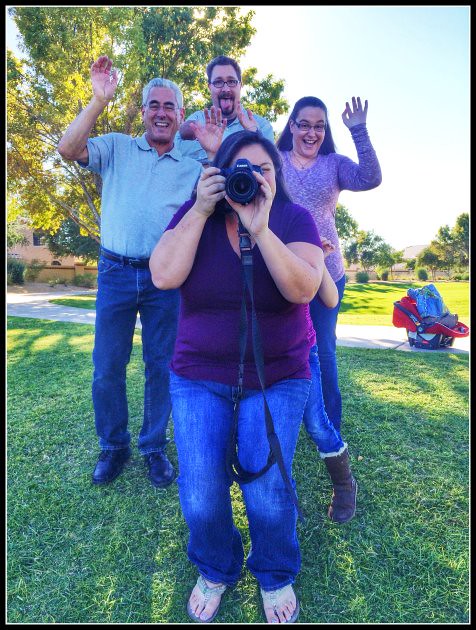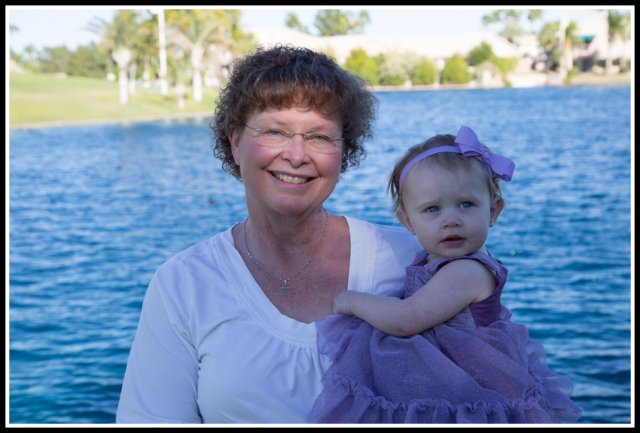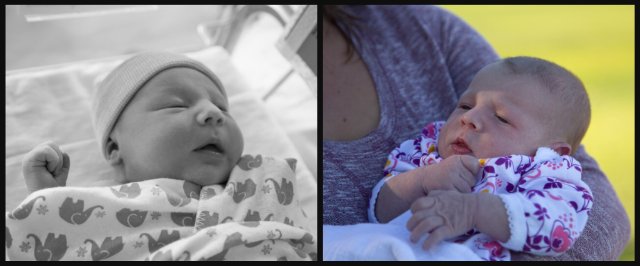Americans have celebrated Thanksgiving since the 1620's as independent colonies and later as states but it wasn't until 1863 in the midst of the Civil War that President Lincoln proclaimed a national Thanksgiving Day to be held each November. For about a hundred years it was a holiday where the entire family gathered together to remember good times, be thankful for all the blessings in their lives and maybe watch (or play) a little football.
I have watched our society, little by little, lose the meaning and tradition of the Thanksgiving holiday. Every year it gets harder to keep a heart filled with thanksgiving and gratitude. Hollywood tells us family is lame (Home Alone comes to mind). The media tells us that instead of being thankful we should be fearful (ISIS, racial unrest, Ebola, politics). Retailers tell us we don't have enough "stuff" and need to go shopping with millions of other people on Thanksgiving Day to get "good deals" and boost the retailers bottom line.
And that's just the everyday, average American with everyday, average problems. People who suffer with serious medical issues, are jobless or homeless, are struggling with serious relationship problems or a host of other concerns often don't feel thankful at all; they feel hopeless.
So how do we have "an attitude of gratitude" even when we feel lost, fearful or hopeless?
I think the Apostle Paul answers that question in 1 Thessalonians 5:16-18 when he says to "Be joyful always; pray continually; give thanks in all circumstances, for this is God's will for you in Christ Jesus." All three instructions (being joyful, praying and giving thanks) are intentional choices we make that, when done consistently, become habits that lead to an attitude of gratitude.
Be joyful always. That implies that no matter what our circumstance is, we can choose to be joyful. It is not an emotional reaction but a conscious decision. It starts by looking for the silver lining, by being optimistic instead of pessimistic. It is because we know the One who is in control of all things that we can choose joy over despair.
Pray continually. This doesn't mean we have to be on our knees with hands clasped 24/7. It means that our relationship with Christ is so personal, so intimate that we can talk to Him any time, anywhere - and we do. We bring all our concerns, worries, hopes and dreams to Him, the loving and omniscient God who cares about the details of our lives.
Give thanks in all circumstances. It's easy to be thankful when things go well but what about when they don't? This doesn't mean we thank God for everything that happens to us. Evil is not from God so we would not thank Him for that. But in every circumstance, we can thank God for His presence, for the good He will accomplish through our trial and distress, for His peace and strength that carries us through.
May your Thanksgiving Day (and every day!) be filled with heartfelt gratitude as you put the Apostle Paul's instructions into practice. Happy Thanksgiving!
Wednesday, November 26
Wednesday, November 19
wacky wednesday - how many does it take??
Our daughter, who lives in North Carolina, flew out here last week with her two daughters to surprise her sister who just had a baby. It was a sweet sister reunion and a fun weekend with the girl cousins getting to know each other (although I am quite certain little baby Hannah and bigger baby Ellie will not remember it).
It was a beautiful weekend and we went to a park by our house to take some pictures. We did groupings of grandparents & granddaughters, sisters and their kids, three generations and the like.
As I was getting my picture taken with granddaughter #2, Ellie, who is a year old and not always a cooperative subject, especially when momma isn't holding her, I began laughing at the antics going on behind the camera. And then I had to wonder... just how many people does it take to get a photograph?
It was a beautiful weekend and we went to a park by our house to take some pictures. We did groupings of grandparents & granddaughters, sisters and their kids, three generations and the like.
As I was getting my picture taken with granddaughter #2, Ellie, who is a year old and not always a cooperative subject, especially when momma isn't holding her, I began laughing at the antics going on behind the camera. And then I had to wonder... just how many people does it take to get a photograph?
The good news is they finally got one!
And, also one of the girls - although by this time the kids were tired of posing and the wind was blowing hair around. Nevertheless, it is my favorite shot of our girls!
Hannah (almost 2 weeks), Janne, Jennifer, Lexie (6 years), Ellie (1 year)
Labels:
Sweethearts,
Wacky Wednesday
Tuesday, November 18
sweetheart #6
Grandchildren (aka sweethearts) are the best thing since sliced bread. They love to spend time you you, don't mind getting smooches and will tell you things they won't tell anyone else.
You think you can't possibly love anyone as much as your spouse or children... until you have grandchildren. You are a little older and wiser than when you had your children and you know things like how quickly they grow up and to appreciate the everyday things.
Two weeks ago we welcomed Sweetheart #6 into the world and our hearts. Like her five North Carolina cousins, she is a blessing to us... and will, undoubtedly, be spoiled just a little by us.
You think you can't possibly love anyone as much as your spouse or children... until you have grandchildren. You are a little older and wiser than when you had your children and you know things like how quickly they grow up and to appreciate the everyday things.
Two weeks ago we welcomed Sweetheart #6 into the world and our hearts. Like her five North Carolina cousins, she is a blessing to us... and will, undoubtedly, be spoiled just a little by us.
Hannah Beckett is a sweet little bundle of joy with a go-with-the-flow personality.
Labels:
Sweethearts
Wednesday, November 12
wacky wednesday - who knew???
Most kids, regardless of gender, like playing with LEGOS. Some kids like to use the "recipe" and build the fire truck or the Star Wars Death Star. Others like to use their imagination and create something entirely on their own.
Most LEGO sets are geared to children. Some sets are movie themed (Star Wars and The Lego Movie come to mind); others are based on superheroes (Batman, Superman, etc.) or everyday heroes (fireman and policemen, among others). Recently "girl sets" with princess or animal themes (with lots of pink bricks) have become popular. But at some point in childhood, most kids lose their fascination with the little interlocking bricks.
Or so I thought.
My sweet husband was googling the television show Big Bang Theory to purchase the last season on DVD and found this:
Most LEGO sets are geared to children. Some sets are movie themed (Star Wars and The Lego Movie come to mind); others are based on superheroes (Batman, Superman, etc.) or everyday heroes (fireman and policemen, among others). Recently "girl sets" with princess or animal themes (with lots of pink bricks) have become popular. But at some point in childhood, most kids lose their fascination with the little interlocking bricks.
Or so I thought.
My sweet husband was googling the television show Big Bang Theory to purchase the last season on DVD and found this:
What could be better than LEGOS & Big Bang Theory together?
(This is the fan model created by Alatariel & GlenBricker, not the actual set. You can see the complete set, minifigures (characters) and accessories they submitted here.)
Further research revealed that ANYONE can submit ideas to LEGO Ideas by creating a model, writing a project description, and following the guidelines and rules outlined by LEGO. The next step is gathering 10,000 supporters for your project. Once a project garners the required support, it enters the LEGO review phase where a review board of set designers and marketing representatives evaluate the project using criteria such as playability, safety and fit within the LEGO brand. All sets, fan ideas and internal ideas, go through this same process with the review board. If a fan's project is selected by the review board for production, the fan designer gets credit and a percentage of the sales. Awesome, huh?
In September, the LEGO review board announced several fan projects that made the cut and Big Bang Theory was one of them! You can see the others on the LEGO Ideas Blog - my Dr. Who friends will want to check it out for sure! And one of the projects is unlike any other I've seen.
The name LEGO is an abbreviation of the two Danish words "leg godt" meaning "play well." With sets for kids of all ages, everyone will play well!
Labels:
Wacky Wednesday
Wednesday, November 5
wacky wednesday - what time is it?
Last weekend most of the country turned their clocks back one hour. The phenomenon known as "Daylight Saving Time" (DST - and no, it is NOT Daylight Savings Time) is a mystery to me. Perhaps it is because Arizona, with the exception of the Navajo Indian Reservation in the northeast part of the state, does not participate in such foolishness. But the whole idea of messing with time made me wonder when we began to actually keep time in this country and why we mess with it now.
Prior to the early 1880's, time of day in the United States was determined locally and varied from town to town. This would help explain the large discrepancies in arrival times for the stagecoach. It was generally determined by some solar method (a sundial, for example) and the town maintained a clock, usually in the clock tower or church steeple, with the "real time" for all the other clocks to be set by.
In 1883, standard time in time zones across the country were instituted by the U.S. and Canadian railroads. Although that made perfect sense so the railroads could maintain accurate schedules, the new system was not embraced by everyone - I guess change is always hard. The railroads, in particular, needed accurate schedules with standardized time to coordinate the trains so they didn't run into each other, especially on single tracks with only an occasional "passing lane." As the practical benefits became obvious, standard time became more popular and was finally established in U.S. law on March 19, 1918 with the Standard Time Act of 1918, also known as the Calder Act. The Calder Act also established DST which was about as popular as standard time in time zones was in the 1880's.
We like to think DST is a modern concept but there is evidence the ancient Romans used it and even our own Benjamin Franklin wrote a paper on the benefits (reducing candle use and allowing farmers to utilize child labor (their own children) without sacrificing education) of changing the clock to enhance daylight hours. Germany was the first country to implement DST in 1916 with most of Europe following shortly thereafter. The benefit at that time was to reduce the use of artificial lighting to save fuel for the war (WWI) effort.
Daylight saving time was repealed in the U.S. in 1919 but standard time in time zones remained the law of the land. The Interstate Commerce Commission was given authority over time zone boundaries but whether or not a region observed DST was determined locally.
Daylight saving time was re-established nationally (and internationally) during WWII (for the same reason as during WWI) but after the war its use varied among states and localities. This caused mass confusion in transportation schedules. The Uniform Time Act (1966) provided standardization for the dates DST was observed but still allowed states or localities to follow DST or not.
The current national system of DST was implemented by a federal law called the Emergency Daylight Saving Time Energy Conservation Act of 1973 in response to the oil shortage of that time and was made permanent a year later. Arizona sent petitions and politicians to Washington D.C. to fight for exemption from DST because it is cooler in the morning hours for farmers, construction workers, etc. to work. DST would force outdoor workers to begin their workday at earlier hours to take advantage of the cooler temperatures. Adding daylight hours in the evening just makes it light later while it is still hot outside and impacts when people can enjoy outdoor activities. For example, people would have to wait until 9:00 to go to a drive-in movie or play baseball on a field with lights rather than under the blazing sun. The Nixon Administration granted that Arizona (and Hawaii and several territories) be exempted from the law and it has remained that way since then.
So why does the Navajo Indian Reservation in northeastern Arizona participate in DST? The reservation spans four states - Arizona, Utah, New Mexico and Colorado - and three of them observe DST so it makes sense that the part in Arizona would also observe DST.
If having just one seventh of the state use DST isn't wacky enough, then how about the fact that inside the boundaries of the Navajo Indian Reservation resides the Hopi Indian Reservation which does not observe DST! Only in Arizona!
Prior to the early 1880's, time of day in the United States was determined locally and varied from town to town. This would help explain the large discrepancies in arrival times for the stagecoach. It was generally determined by some solar method (a sundial, for example) and the town maintained a clock, usually in the clock tower or church steeple, with the "real time" for all the other clocks to be set by.
In 1883, standard time in time zones across the country were instituted by the U.S. and Canadian railroads. Although that made perfect sense so the railroads could maintain accurate schedules, the new system was not embraced by everyone - I guess change is always hard. The railroads, in particular, needed accurate schedules with standardized time to coordinate the trains so they didn't run into each other, especially on single tracks with only an occasional "passing lane." As the practical benefits became obvious, standard time became more popular and was finally established in U.S. law on March 19, 1918 with the Standard Time Act of 1918, also known as the Calder Act. The Calder Act also established DST which was about as popular as standard time in time zones was in the 1880's.
We like to think DST is a modern concept but there is evidence the ancient Romans used it and even our own Benjamin Franklin wrote a paper on the benefits (reducing candle use and allowing farmers to utilize child labor (their own children) without sacrificing education) of changing the clock to enhance daylight hours. Germany was the first country to implement DST in 1916 with most of Europe following shortly thereafter. The benefit at that time was to reduce the use of artificial lighting to save fuel for the war (WWI) effort.
Daylight saving time was repealed in the U.S. in 1919 but standard time in time zones remained the law of the land. The Interstate Commerce Commission was given authority over time zone boundaries but whether or not a region observed DST was determined locally.
Daylight saving time was re-established nationally (and internationally) during WWII (for the same reason as during WWI) but after the war its use varied among states and localities. This caused mass confusion in transportation schedules. The Uniform Time Act (1966) provided standardization for the dates DST was observed but still allowed states or localities to follow DST or not.
The current national system of DST was implemented by a federal law called the Emergency Daylight Saving Time Energy Conservation Act of 1973 in response to the oil shortage of that time and was made permanent a year later. Arizona sent petitions and politicians to Washington D.C. to fight for exemption from DST because it is cooler in the morning hours for farmers, construction workers, etc. to work. DST would force outdoor workers to begin their workday at earlier hours to take advantage of the cooler temperatures. Adding daylight hours in the evening just makes it light later while it is still hot outside and impacts when people can enjoy outdoor activities. For example, people would have to wait until 9:00 to go to a drive-in movie or play baseball on a field with lights rather than under the blazing sun. The Nixon Administration granted that Arizona (and Hawaii and several territories) be exempted from the law and it has remained that way since then.
So why does the Navajo Indian Reservation in northeastern Arizona participate in DST? The reservation spans four states - Arizona, Utah, New Mexico and Colorado - and three of them observe DST so it makes sense that the part in Arizona would also observe DST.
If having just one seventh of the state use DST isn't wacky enough, then how about the fact that inside the boundaries of the Navajo Indian Reservation resides the Hopi Indian Reservation which does not observe DST! Only in Arizona!
Labels:
Wacky Wednesday
Subscribe to:
Posts (Atom)





